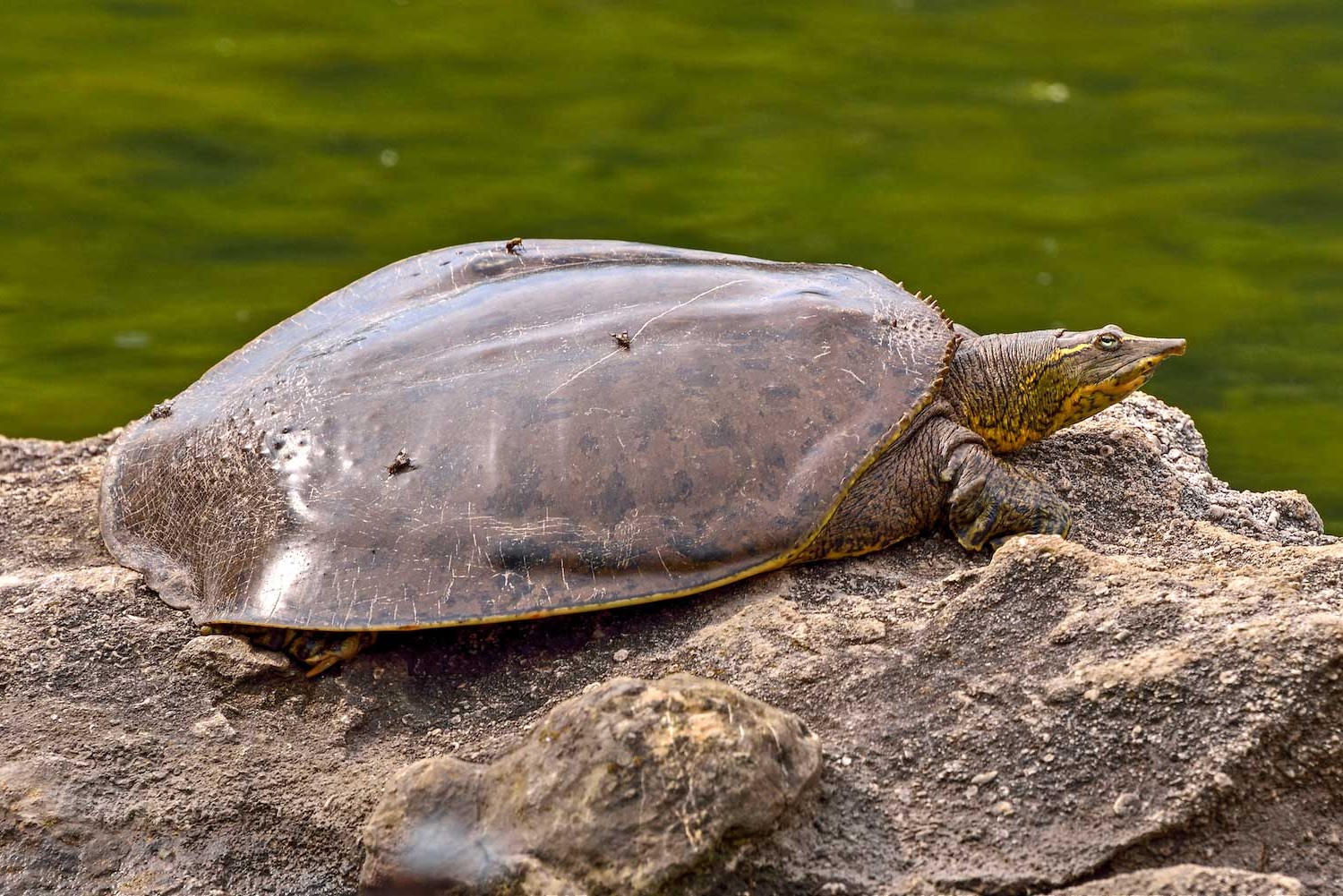
Softshell turtles are some of the most unique and fascinating creatures in the reptile world. Unlike their hard-shelled cousins, these turtles have a leathery, flexible shell that sets them apart. But what makes them so special? Softshell turtles are known for their incredible speed both in water and on land, making them agile hunters and elusive prey. They have snorkel-like noses that allow them to breathe while mostly submerged, adding to their stealthy nature. These turtles can be found in various parts of the world, each species adapting uniquely to its environment. Ready to dive into some amazing facts about these intriguing reptiles? Let's get started!
What Are Softshell Turtles?
Softshell turtles are fascinating creatures with unique characteristics that set them apart from other turtles. They have a distinctive appearance and intriguing behaviors.
-
Softshell turtles have a flat, leathery shell. Unlike the hard, bony shells of most turtles, their shells are soft and flexible, making them more agile in water.
-
They are excellent swimmers. Their streamlined bodies and webbed feet allow them to move swiftly through water, making them adept hunters.
-
Softshell turtles can breathe through their skin. They have specialized skin that allows them to absorb oxygen directly from the water, enabling them to stay submerged for extended periods.
Habitat and Distribution
Softshell turtles are found in various parts of the world, each species adapting to its environment.
-
They inhabit freshwater environments. Rivers, lakes, and ponds are common habitats for these turtles, where they can easily find food and shelter.
-
Softshell turtles are native to Asia, Africa, and North America. Different species are distributed across these continents, each with unique adaptations to their local environments.
-
They prefer sandy or muddy bottoms. These substrates provide excellent camouflage and make it easier for them to bury themselves to ambush prey or avoid predators.
Diet and Hunting Techniques
Softshell turtles have interesting dietary habits and hunting strategies that make them effective predators.
-
They are carnivorous. Their diet mainly consists of fish, insects, and other small aquatic animals, which they catch with their sharp jaws.
-
Softshell turtles use a sit-and-wait hunting strategy. They often bury themselves in the substrate, waiting for unsuspecting prey to come close before striking with lightning speed.
-
They have a long, snorkel-like nose. This adaptation allows them to breathe while remaining mostly submerged and hidden from view.
Reproduction and Lifespan
The reproductive habits and lifespan of softshell turtles are as unique as their physical characteristics.
-
Female softshell turtles lay their eggs on sandy beaches. They dig nests in the sand where they deposit their eggs, which incubate under the warmth of the sun.
-
They can lay up to 30 eggs at a time. This high reproductive output increases the chances of offspring survival despite predation and environmental challenges.
-
Softshell turtles have a long lifespan. They can live up to 50 years or more in the wild, given favorable conditions and minimal threats.
Unique Adaptations
Softshell turtles possess several unique adaptations that help them survive and thrive in their environments.
-
Their shells provide flexibility and speed. The soft, leathery shell allows for greater mobility and faster swimming compared to hard-shelled turtles.
-
They have powerful limbs. Their strong, webbed feet enable them to dig into the substrate and swim efficiently.
-
Softshell turtles can change color. Some species can alter their skin color to blend in with their surroundings, providing effective camouflage against predators and prey.
Conservation Status
Understanding the conservation status of softshell turtles is crucial for their protection and survival.
-
Many species are threatened or endangered. Habitat destruction, pollution, and hunting have led to declining populations of several softshell turtle species.
-
Conservation efforts are underway. Various organizations and governments are working to protect softshell turtle habitats, regulate hunting, and raise awareness about their plight.
Final Thoughts on Softshell Turtles
Softshell turtles are truly fascinating creatures. Their unique appearance, with leathery shells and snorkel-like noses, sets them apart from other turtles. These reptiles are not just interesting to look at; they play a crucial role in their ecosystems by controlling insect and fish populations. They can live in various habitats, from rivers to lakes, showing their adaptability. Despite their tough exterior, softshell turtles face threats from habitat loss and pollution. Conservation efforts are essential to ensure their survival. Learning about these turtles helps us appreciate the diversity of life on Earth and the importance of protecting it. So next time you see a softshell turtle, remember the incredible facts that make them special. Whether you're a nature enthusiast or just curious, there's always more to discover about these amazing animals.
Was this page helpful?
Our commitment to delivering trustworthy and engaging content is at the heart of what we do. Each fact on our site is contributed by real users like you, bringing a wealth of diverse insights and information. To ensure the highest standards of accuracy and reliability, our dedicated editors meticulously review each submission. This process guarantees that the facts we share are not only fascinating but also credible. Trust in our commitment to quality and authenticity as you explore and learn with us.


